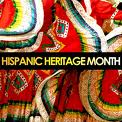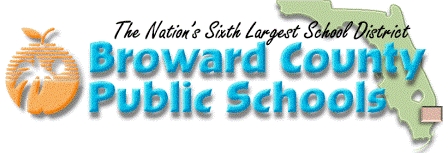|
||||
Hispanic Heritage Month

Hispanic Heritage Month - September 15 - October 15
Hispanic Heritage Month begins on September 15,
the anniversary of independence for five Latin American
countries—Costa Rica, El Salvador, Guatemala, Honduras,
and Nicaragua. In addition, Mexico declared its
independence on September 16 and Chile on September 18.
The term Hispanic, as defined by the U.S. Census Bureau,
refers to Spanish-speaking people in the United States of
any race. For more information:
www.floridahispanicheritage.com/
www.educationworld.com/
www.factmonster.com
www.suelebeau.com
www.crayola.com/calendar/detail.cfm?event_id=161&year=2005&extended=true
www.smithsonianmag.com/people-places/hispanic-heritage-events.html
The U.S. Government, in wanting to recognize the accomplishments of Hispanic-American citizens created by Public Law 90-498 National Hispanic Heritage Week on September 17, 1968. Public Law 100-402 expanding the event to National Hispanic Heritage Month on August 17, 1988 later amended the law.
Source: http://govdocs.evergreen.edu/hotopics/hispanicheritage/
What is a Hispanic?
Let's start by saying what it is not. It is not a racial identification. Hispanic is more of a regional identification like saying "North American." What is a Hispanic? Hispanics come in all sizes and shapes. There are Jewish, Arab, Asian, Indian, Black and White Hispanics as well as brown. What most Americans perceive as brown is actually a mix of Indian and White. When Spanish explorers settled the Americas, they did not bring families with them like the English settlers did when they arrived in the U.S. The Spanish explorers were mostly soldiers and priests, etc. As a result, the soldiers intermarried with the Indian women they found in the countries they explored. The result was a new racial identity known as mestizos. In time, mestizos became the middle class and the largest population.
The U.S. Census Bureau defines Hispanic Origin as:
Persons of Hispanic origin were identified by a question that asked for self-identification of the person's origin or descent. Respondents were asked to select their origin (and the origin of other household members) from a "flash card" listing ethnic origins. Persons of Hispanic origin, in particular, were those who indicated that their origin was Mexican, Puerto Rican, Cuban, Central or South American, or some other Hispanic origin. It should be noted that persons of Hispanic origin might be of any race.
Source: The Hispanic Population in the United States: March 1993, Current Population Reports, Population Characteristics, Series P20-475.
Hispanic Heritage Teaching Resources from Smithsonian Education: www.smithsonianeducation.org/educators/resource_library/hispanic_resources
Infoplease- All the knowledge you need www.infoplease.com/spot/hhm1.html
Hispanic Heritage Month on A & E Television Networks
www.history.com/classroom/hhm/
Information from the U.S. Census Bureau: http://www.census.gov/population/www/socdemo/hispanic/hispanic.html
Floridians Invited to Participate in Hispanic Heritage Student and Teacher Contests
As part of the Hispanic Heritage Month celebration Sept. 15 through Oct. 15, 2010, Florida students in kindergarten through 12th grade are invited to participate in student contests centered around the theme, “Recognizing Florida’s Hispanic Heritage: Past, Present and Future.” Parents, teachers, students and principals are also invited to nominate full-time educators in elementary, middle and high schools for the Hispanic Heritage Month Excellence in Education Award. Winners will be recognized at the Governor’s Hispanic Heritage Month celebration to be held in Tallahassee in October.
Student Contests:
Art Contest for Grades K-3
• Two winners will be selected from entries submitted by students in grades K-3.
• Grades K-3 Art Contest Prompt: Luis Nunez is a Hispanic-American artist living in Florida. Students should think about how his paintings “Egret and Mangroves,” “Blue Heron,” and “They’re Humans, Junior, Let’s Go,” make them feel about the importance of protecting Florida’s wildlife, marshes, and beaches. Students should draw a picture of their favorite animal that is native to Florida showing it in its natural habitat.
Essay Contest for Grades 4-12
• Three winners will be selected – one at elementary (grades 4 and 5), one at middle (grades 6-8), and one at high school (grades 9-12) – from among essays submitted by students in grades four through 12.
• Grades 4 and 5 Writing Prompt: Students should discuss a well-known Hispanic Floridian whose contribution has made a difference in their life or their community.
• Grades 6 – 12 Writing Prompt: Students should interview and describe a Hispanic American whom they know has devoted his or her life to the service of others. The essay should answer the question, “How has this person’s life strengthened his or her community and Florida as a state?”
Continue to check the Multicultural CAB Conference for current information and updates of resources and materials about Hispanic Heritage Month.
Please share the programs and projects that you have developed with the Multicultural, ESOL and Program Services Department.
Send to:
linda.medvin@browardschools.com
Back to Home
Multicultural, ESOL and Program Services Department
201 SW 172 Avenue Pembroke Pines, FL 33029 USA
Phone: (754) 321-2950

